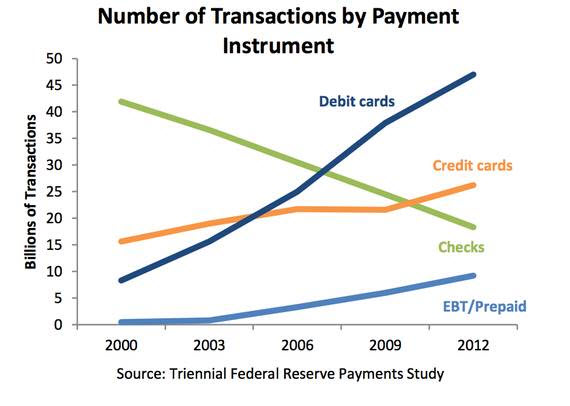Did you know that up until September 11th, 2001 that checks were physically moved around the country in trucks to processing centers which sorted and placed them on airplanes to be physically flown to their various banks. Yes, you read that correctly: paper checks were physically moved around the country unless only a few years ago.
Unexpected: Tragedy brings efficiency
When the September 11th attacks happened, and all air traffic was grounded, the Check 21 Act was passed to allow banks to use electronic images of checks instead of the physical check itself. There was a study called “Getting Rid of Paper: Savings from Check 21” which determined a savings of close to $1.2 billion a year for banks and a $2 billion benefit to consumers and businesses from faster processing times. Faster processing times also meant a reduced “float time” that paper checks once provided.
Check use peaked in 1995 at some 49.5 billion payments. Since that time the use of Debit Card Payments (launched in 1966) has been skyrocketing with Credit Card and ACH payments making steady advances as well. Additional payment instruments breaking their way onto the scene are Prepaid Cards and alternative payments like Bitcoin.
Don’t Be Left Behind
For churches and ministries who still receive the majority of payments by physical check through the traditional offering plate these statistics may come as quite a shock. As the trend in physical checks continue to decrease, the need for churches and ministries to implement online giving solutions will continue to increase in order to meet the demands of its constituents.
Many organizations have already established online giving; however, if you have not, now is the time to consider making this change. We realize, there were always be some donors who will continue to want to make their contributions via physical check. But you cannot deny that the physical check is dying and considered to be antiquated and foreign to most born after 1989 – these are your future donors! Electronic payments are here to stay.



